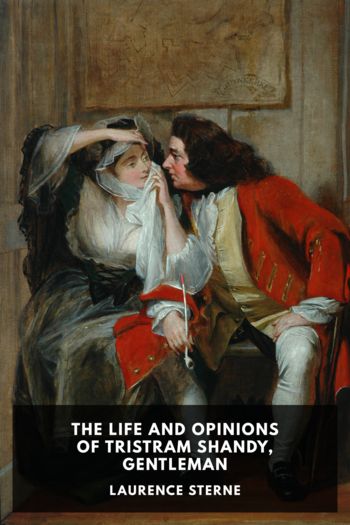The Life and Opinions of Tristram Shandy, Gentleman, Laurence Sterne [rosie project txt] 📗

- Author: Laurence Sterne
Book online «The Life and Opinions of Tristram Shandy, Gentleman, Laurence Sterne [rosie project txt] 📗». Author Laurence Sterne
If, however, the marriage, which, difficulties being removed, took place on Easter Monday, March 30, 1741, did not bring lasting happiness to Sterne, it probably brought him some at the time, and it certainly brought him an accession of fortune; for in addition to what little money Miss Lumley had, a friend of hers bestowed the additional living of Stillington on her husband. These various sources of income must have made a tolerable revenue, which, after the publication of Tristram, was further supplemented by yet another benefice given him by Lord Falconbridge at Coxwold, a living of no great value, but a pleasant place of residence. Add to this the profits of his books in the last eight years of his life, which were for that day considerable, and it will be seen that, as has been said above, Sterne might have been much worse off in this world’s goods than he was. He seems, like other people, to have made some rather costly experiments in farming; and his way of life latterly, what with his own journeys and sojourns in London, and the long separate residence of his wife and daughter in France, was expensive. But he complains little of poverty; and though he died in debt, much of that debt was due to no fault of his, but to the burning of the parsonage of Sutton.
It is all the more remarkable in one way, though the absence of any pressure of want may explain it in another, that Sterne’s great literary gifts should have remained so long without finding any kind of literary expression, unless it was in the newspaper way, in respect to which he first obliged and afterwards disobliged his uncle. There is, I believe, no dispute about the fact that he distances, and that by many years, every other man of letters of anything like his rank—except Cowper, whose affliction puts him out of comparison—in the lateness of his fruiting time. All but a quarter of a century had passed since he took his degree when Tristram Shandy appeared; and, putting sermons aside, the very earliest thing of his known, The History of a Good Watch Coat, only antedated Tristram by two years or rather less. He was no doubt “making himself all this time;” but the making must have been an uncommonly slow process. Nor did he, like a good many writers, occupy the time in preparing what he was afterwards to publish, unless in the case of a few of his sermons. It is positively known that Tristram was written merely as it was published, and the Journey likewise. Nor is even the first by any means a long book. It is as nearly as possible the same length as Fielding’s Amelia when printed straight on; and even then more allowance has to be made, not merely for its free and audacious plagiarisms, but for its constantly broken paragraphs, stars, dashes, and other trickeries. If it were possible to squeeze it up, as one squeezes a sponge, into the solid texture of an ordinary book, I doubt whether it would be very much longer than Joseph Andrews.
It will probably be admitted, however, that the idiosyncrasy of the writings of Sterne’s last and incomplete decade, even if it be in part only an idiosyncrasy of mannerism, is almost great enough to justify the nearly three decades of Lehrjahre (starting from his entrance at Cambridge) which preceded it. It is true that of the actual occupations of these years we know extremely little—indeed, what we know as distinguished from what is guesswork and inference is mostly summed up by Sterne’s own current and curvetting pen thus: “I remained near twenty years at Sutton, doing duty at both places [i.e., Sutton and Stillington]. I had then very good health. Books, painting, fiddling, and shooting were my amusements;” to which he adds only that he and the squire of Sutton were not very good friends, but that at Stillington the Croft family were extremely kind and amiable. From other sources, including, it is true, his own letters—though the dates and allusions of these are so uncertain that they are very doubtful guides—we find that his chief crony during this period, as during his life, was the already-mentioned John Hall, who had taken to the name of Stevenson, and was master of Skelton Castle, a very old and curious house on the border of the Cleveland moors, not far from the town of Guisborough. The master of “Crazy” Castle—he liked to give his house this name, which he afterwards used in entitling his book of Crazy Tales—his ways and his library, have usually been charged with debauching Sterne’s innocent mind, which I should imagine lent itself to that process in a most docile and morigerant fashion; but whether this was the case or not, it is clear that Stevenson bore no very good reputation. It is not certain, but was asserted, that he had been a monk of Medmenham. He gathered about him at Skelton a society which, though





Comments (0)